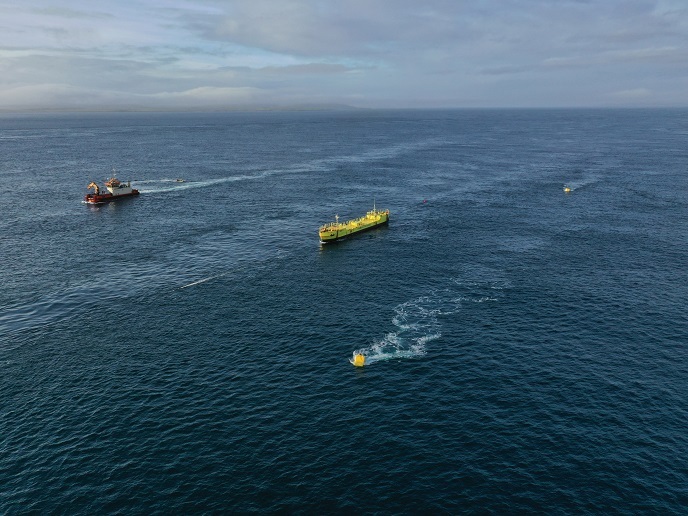Pioneering technology harnesses energy from tidal currents
Magallanes Renovables(opens in new window), a Spanish-based tidal energy developer, designed and manufactured an innovative, second-generation tidal energy platform solution known as ATIR. The EU-funded OCEAN_2G(opens in new window) project was tasked with further developing ATIR for the purposes of commercialisation. “We set out to test, validate and pre-certify a full-size, tidal energy prototype system that will have a generating capacity of up to 2 MW from tidal currents,” says Alejandro Marques de Magallanes, project coordinator and General Director of Magallanes Renovables. When deployed, ATIR is fixed to the seabed using four anchors, two at the bow and another two at the stern, with two counter-rotating, three-bladed rotors below the hull. The rotors’ movement is transformed into mechanical energy and then converted into electricity by a generator. The blades have a variable pitch system allowing blade configuration and pitch to change according to the current. A powerful control system manages the on-board systems and enables remote control and communications with ATIR.
From prototype to market
Project partners demonstrated that the technology is viable from a technical, operational and commercial perspective. They validated the full-scale prototype at several towing trials conducted in a controlled environment at the Vigo estuary in Spain. They then installed and secured ATIR at the European Marine Energy Centre’s tidal energy test site in Orkney, Scotland. The prototype was battered by high-velocity tides for 12 months without suffering any damage. The OCEAN_2G team also designed the mooring system at Fall of Warness – the Centre’s test zone in the Orkney Islands. This enabled installation and removal in a fast and efficient way while reducing time and costs. While the platform was at this site, team members adapted the mooring system to eliminate vibrations and extend the platform’s lifespan. After successfully generating energy from tidal currents for 6 months, the platform is currently part of an operation that will be key to future commercialisation and to the system’s complete validation. The platform will be transported from the Fall of Warness where it’s currently stationed to a shipyard on the mainland. Once there, it will undergo general maintenance and additional optimisation. “We have also been able to improve our operational and maintenance procedures, allowing us to reach a lower levelised cost of energy for the market,” notes Marques de Magallanes. “We have also carried out several pre-certification, due diligence and market studies to deliver a refined business model.” The consortium has established industrial and commercial contacts that will help in the long-term improvement and development of tidal energy.
Step change in tidal energy market
The EU and the United Kingdom envision zero emissions by 2050, while the Scottish government has set a target to produce 100 % of its electricity from renewable sources by 2020. “A technology to harness energy from a new renewable resource will benefit these objectives,” concludes Marques de Magallanes. “OCEAN_2G has enabled Magallanes Renovables to develop a technology that will benefit the energy production system with a new source of electricity.” What’s more, end users will gain from cleaner energy that reduces pollution, and producers will profit financially from a more efficient platform design, operation and maintenance.







